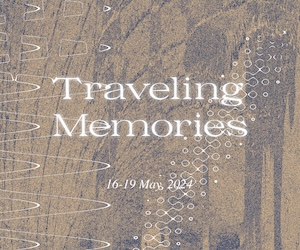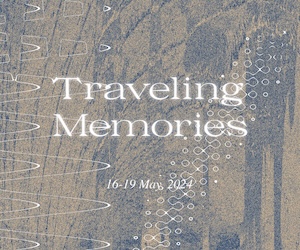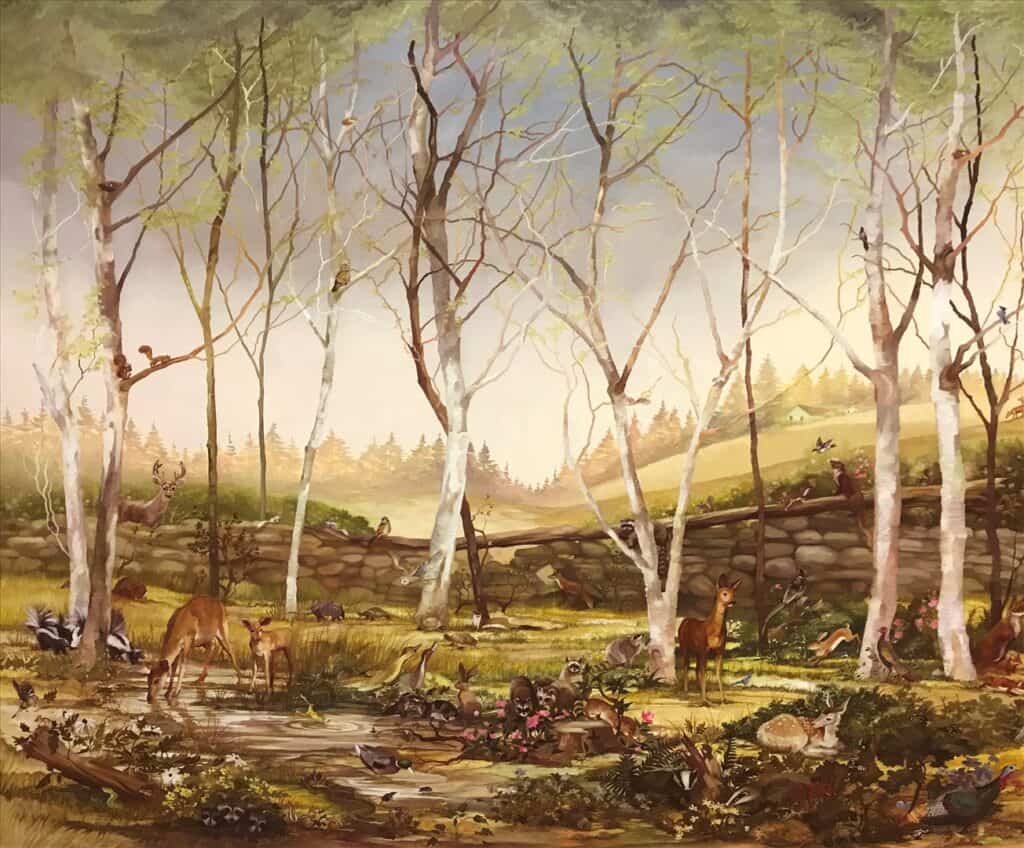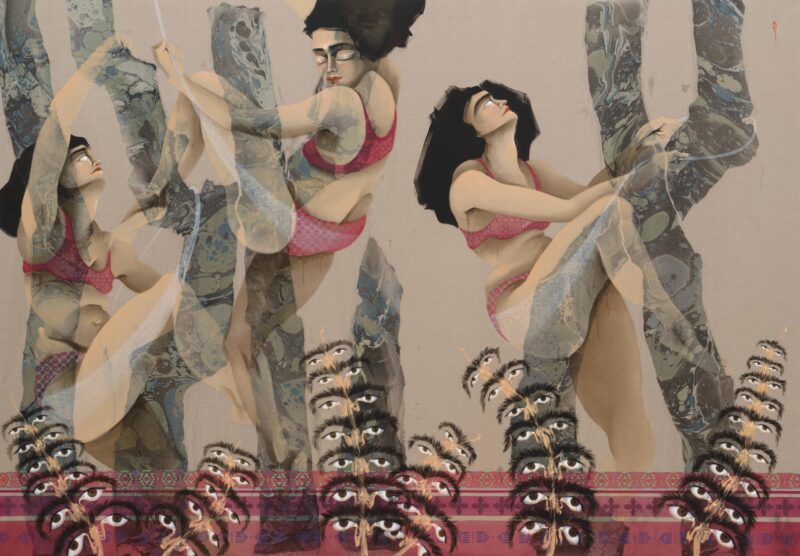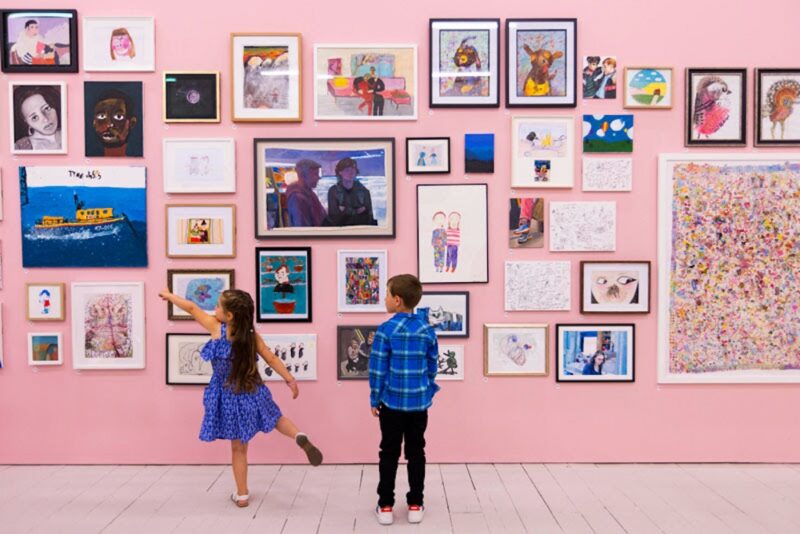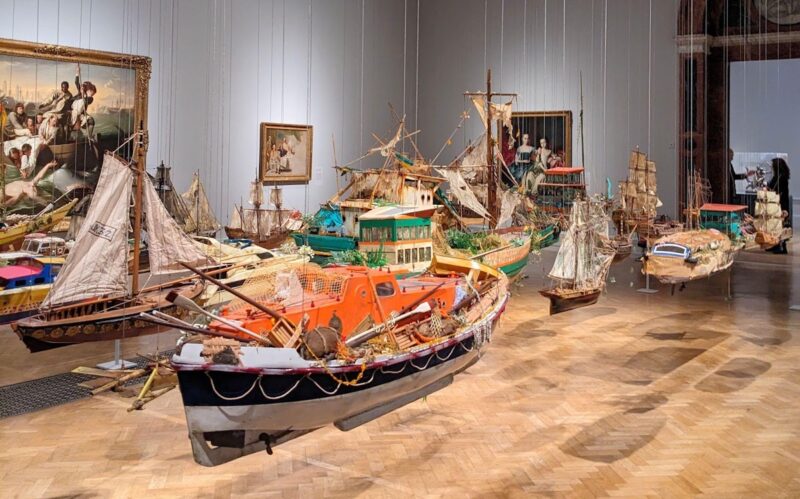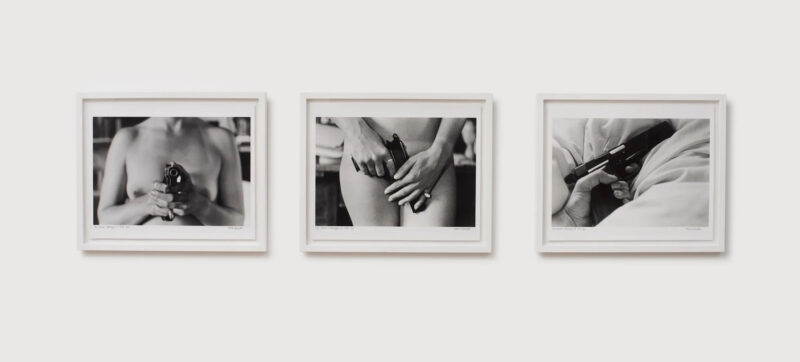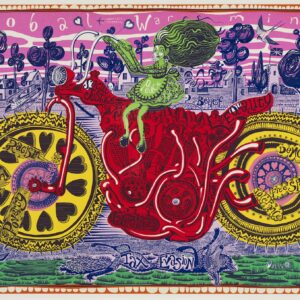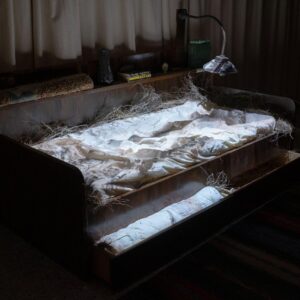Grace O’Connor: 1240 – A Time of Fulfilment – Oil on canvas, 128 x 154 cm
There are 1,465 works in this year’s Royal Academy Summer Exhibition, a third of them in the two galleries curated by Grayson Perry, who declares his approach ‘democratic’. So there’s no lack of options for making a selection of, say, six. Should I go for the most impressive works, irrespective of price or availability (e.g. Work 1 Christina Iglesias, 72 Rose Wiley, 352 Kathleen Ryan, 426 Mali Morris, 1305 John Gerrard, 1385 El Anatsui), or personal favourites (e.g. 163 Rachel Champion, 217 Jane Harris, 686 Moseley & Shuster, 850 Jock McFadyen, 862 Markus Vater) or particularly good value-for–money (e.g. 1412 Elpida Hadzi-Vasileva, 59 Stuart Amphlett, 803 Jayne Banovic, 239 Marion Piper, or editions such as 820 Fiona Banner, 1034 Carol Robertson) or works from the best-curated rooms (i.e. those jointly handled by Rana Begum and Niall McLaughlin)?
All possible, but there is lots of emphasis on the natural world, in line with the theme of Climate’ chosen by the exhibition’s coordinator, Alison Wilding. The £25,000 Charles Wollaston Award for the .mot disguished’ work was won by Uta Kögelsberger for her video installation CULL, which follows the gigantic task of the clear-up process after the devastating impact of wildfires in 2020. Bill Woodrow’s opening room consists largely of trees. Conrad Shawcross has chosen a whole wall of clouds. As for animals, I see my lead image as a charming vision of how things might be without people – not so bad, perhaps. And here are my choices of narrower animal works covering six classes: four from the Chordata phylum of vertebrates (mammal, bird, fish and amphibian), two from the Arthropoda (a crustacean and insect). I could have added Michael Armitage’s snakes to cover the class of reptiles, but artists rarely deal with the other five phylums, e.g. I didn’t spot any flatworms (Platyhelminthes) or springtails (Entognatha) .
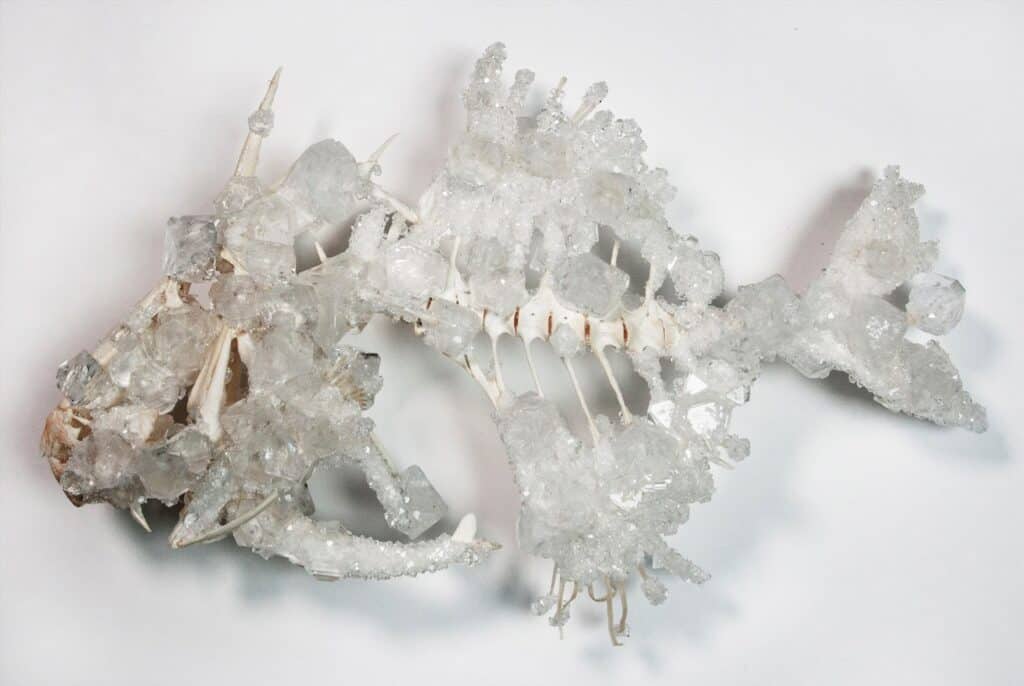
503 Ackroyd & Harvey: Vagrant Species (Gray Triggerfish Balistes Capriscus) Version 1 – Fish skeleton, aluminium potassium sulphate, stainless steel rod, Perspex case, 44 x 58 x 13 cm
The biological term ‘Vagrant Species’ describes one pushed out of its normal range by climate change. The skeleton is of a Gray Triggerfish, normally seen in the Mediterranean but increasingly found in UK waters and also subject to increasing chemical changes due to ocean acidification, paralleled here by a visually striking process of crystallisation.

436: Gary Hume: Swans – charcoal on canvas over board, 149 x 244 cm
Swans is from a series of large paintings which were arranged in a continuous line at Art Basel recently. Even on a single canvas, the bevy’s necks curve and intersect to transform the negative space into geometries with a hint of Escher. Hume use charcoal on canvas, as he has extensively over the past year, to painterly effect to move the simplified birds between figuration and abstraction, with the deft extra touch of one beak coloured brown.
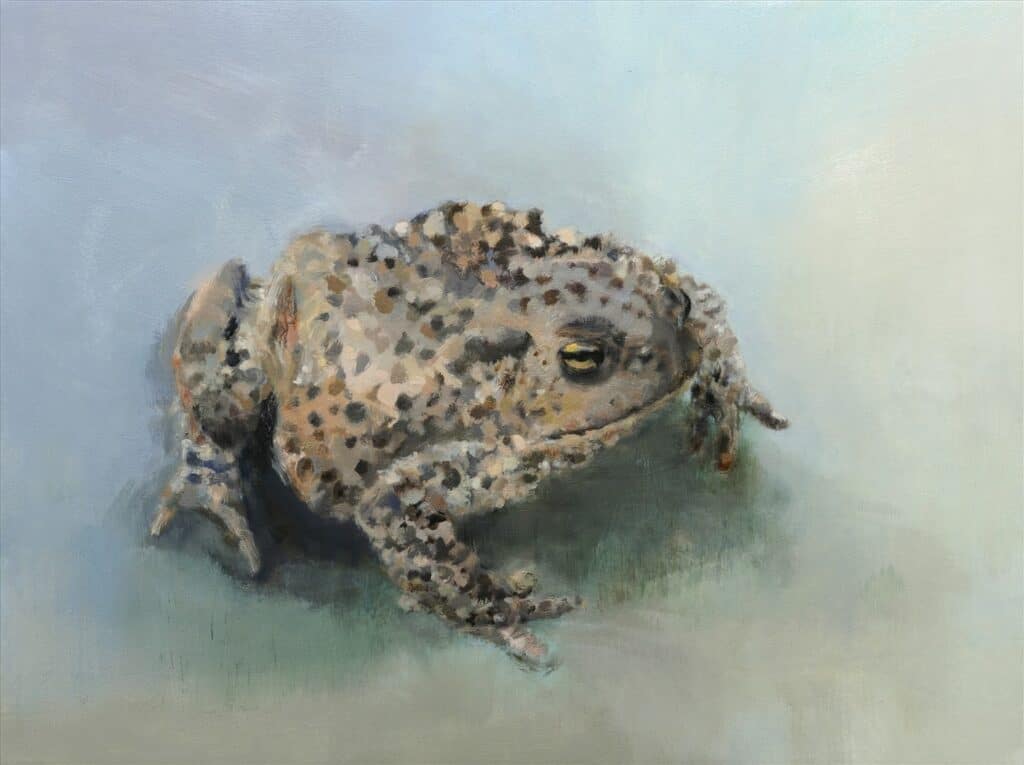
823 Anna Dickerson: The Conservator, Toad Dynasty – Oil on Panel, 30 x 40cm
Reasonably traditional depictions of animals always abound in the Summer Show. Kent-based Anna Dickerson, London Zoo’s first artist in residence in 2009-10, specialises in animal and bird subjects. This characterful and fuzzily precise anuran comes with a teasing title: is it as painted by someone acting to conserve toads, or is the toad itself a conservator, perhaps one of the last remaining individuals capable of breeding?
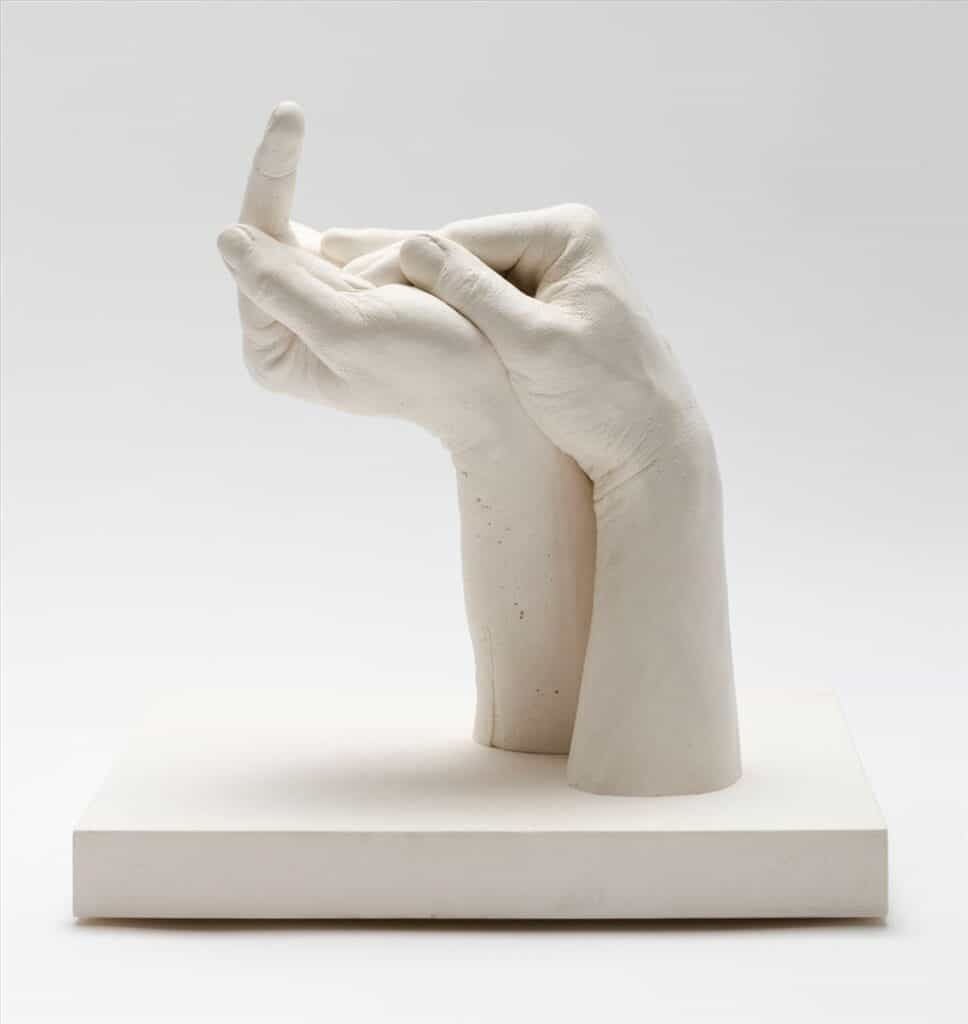
1414 Marcus Coates: Western Black Rhino – Plaster, 29 x 25 x 28 cm
What, if anything, is the distinction between human and natural? That question lies behind quite a few works, including Marcus Coates’ series of plaster casts of the artist’s hands performing the actions to cast the shadows of different species – two mammals for the price of one. The Black Rhino is, of course, threatened with imminent distinction at the hands of man, all too likely to pass into the shadows for good.
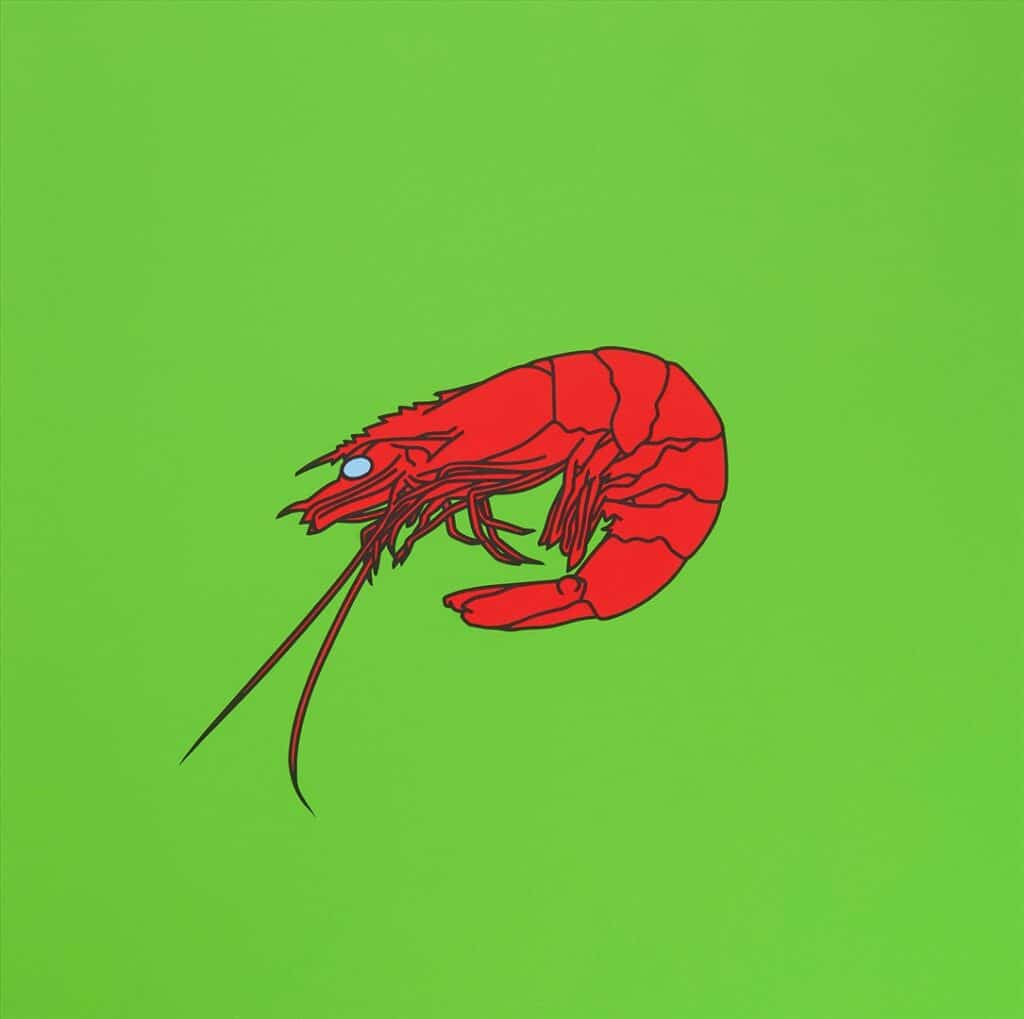
415 Michael Craig-Martin: Untitled (Prawn Green) – Acrylic on aluminium, 90 x 90 cm
Michael Craig-Martin developed his distinctive visual language by depicting everyday objects, saying that he ‘came to feel that the objects around us, particularly the ones that we value the least because they were the most ubiquitous, were actually the most interesting’. In recent years he has applied the approach more broadly: here you could say that he moves on from human to divine or evolutionary design. Either way, the intensity of colour at considerable scale vests the humble prawn with an unexpected presence.
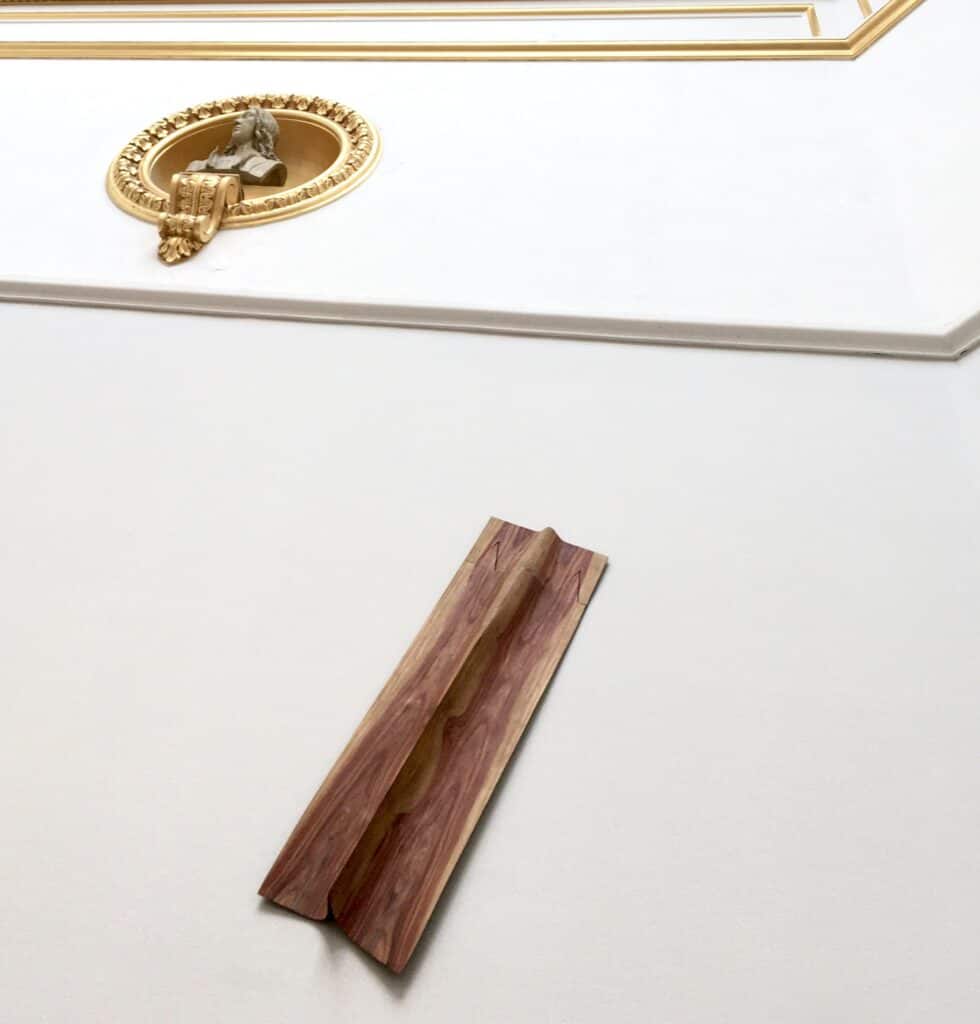
1380 Frances Richardson: Deceiver – Tulipwood veneer on beech plywood, 107 x 33 x 8 cm
Don’t be taken in: I reckon this work pretending to pay attention to the innate qualities of its materials is actually a moth, readying itself for camouflage in a well-veneered room. Richardson distinguishes between ‘real phantoms’ and ‘phantom reals’ – original creations which don’t make it into existence as opposed to echoes of existent originals – but this moth seems well equipped to flit between the categories.
Art writer and curator Paul Carey-Kent sees a lot of shows: we asked him to jot down whatever came into his head
